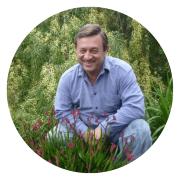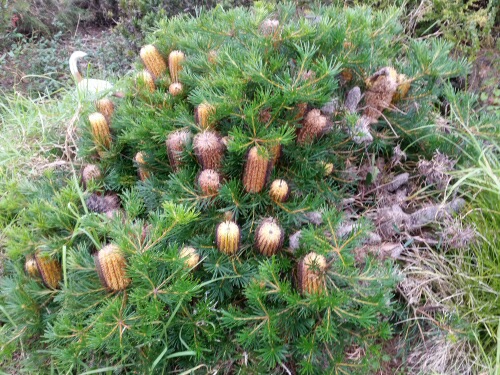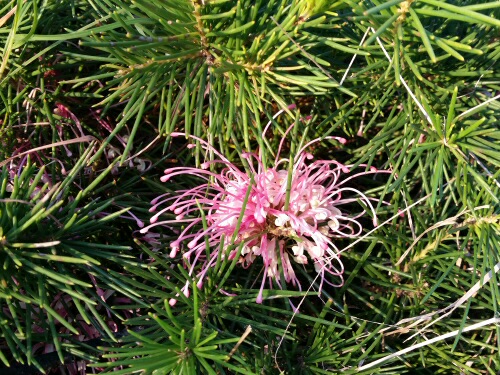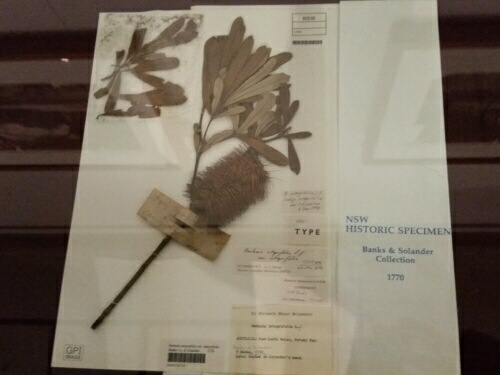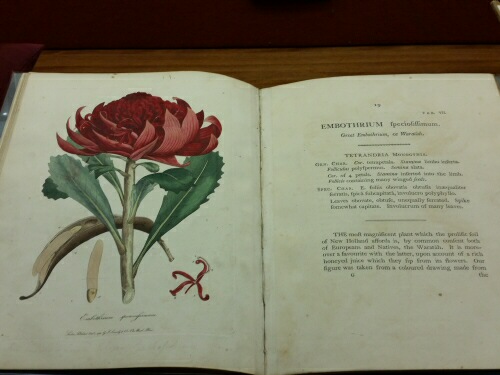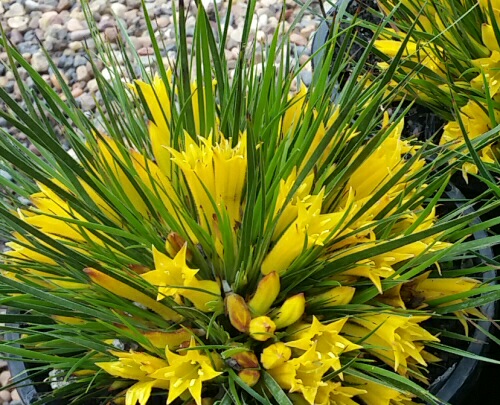WINTER BUSHWALKING AT CATHERINE HILL BAY
I am currently spending a lot of time in the historic township of Catherine Hill Bay (Catho to the locals), a little to the south of Newcastle in New South Wales. An old coal mining town, it features a whole series of quaint little miners’ cottages, and various reminders of the town’s industrial past. The other amazing feature here is that it is surrounded by the most beautiful stretches of coastal bushland with all sorts of treasures that light up through the wintertime.
Banksias are great through winter, and these are perhaps the signature plant of the Catho bushland. There are at least 4 species locally including hairpin banksia (B. spinulosa), rusty banksia (B. oblongifolia), coastal banksia (B. integrifolia) and wallum banksia (B. aemula). As you get closer to the ocean the height of the vegetation decreases dramatically and the banksias are no exception to this rule, with beautiful and interesting forms everywhere. My favourites are the various colour forms of hairpin banksia (pictured below) with the styles varying from almost black to rich golden tones.
There was a serious bushfire in the area in 2013 and this has had a profound impact on the bush as you would imagine. There was widespread damage and unfortunately it took out several historic buildings in Catho, including Wallarah House which overlooked the bay in spectacular fashion. Amidst the destruction the bush rises phoenix-like from the ashes, and native plants like banksias either regenerate from seed or from the base of the plant via a structure known as the lignotuber.
Grass trees (Xanthorrhoea) are absolutely going off at the moment along with a spectacular dwarf form of Hakea bakeriana which has large pink and white flowers. Other plants that caught my eye are the sweetly perfumed wattle Acacia suaveolens and the running postman Kennedia prostrate.
BEHIND THE SCENES AT THE ROYAL BOTANIC GARDENS SYDNEY
I had the wonderful experience in late June of a guided tour of the inner sanctum of the Royal Botanic Gardens Sydney in my role as president of the Horticultural Media Association NSW.
Librarian Miguel Garcia showed us a range of treasures that gave glimpses of botanical and horticultural history through the last few hundred years. Think of a time when botanists were trying to puzzle their way through the weird and wonderful specimens coming from the New World. A particular highlight for me was seeing a pressing of one of the first specimens collected by Jospeh Banks, of Banksia integrifolia from Botany Bay. Imagine the wonder of someone who had been raised on roses and primulas seeing the amazing flowers of the banksia for the first time!
What an amazing time it must have been. No digital cameras to capture thousands of images. Each specimen was either captured by meticulously accurate drawings, a work of art in themselves, or by pressing live specimens.
We also visited the Plant Pathology Laboratory at the Gardens, and were guided by Dr Ed Liew around the facilities. The Gardens offer a paid service to diagnose and advise on plant problems. Frequently plant health issues are not caused by pathogens and they are often able to establish other causes such as nutrient problems. However, when diseases are involved, a systematic process is used to culture and subsequently identify a plant pathogen before making recommendations as to how to manage the problem.
I am also excited to share with you the news that I have been appointed as an Honorary Research Associate at the Plantbank facility at The Australian Botanic Gardens and Mt Annan, part of the Royal Botanic Gardens, Sydney. I am going to be working on creating new cultivars of Australian plants to be released through the Botanic Gardens. I will be keeping you informed about the fascinating research projects at Mt Annan that are helping preserve our amazing biodiversity.
WHAT’S NEW AT NATIVE NURSERIES
I recently visited my friends at the Sydney Wildflower Nursery and was knocked out by flowering specimens of Conostylis bealiana ‘Bright Sparks’, a very showy form of this spectacular cousin of the kangaroo paws from Western Australia.
This species comes from the Fitzgerald River national Park in southern Western Australia. It is best grown in a pot in more humid climates of coastal areas of eastern Australia but can make a great rockery and edging plant across southern areas of Australia.
I am also proud to announce that my new series of ‘Tall and Tough’ kangaroo paws is starting to appear in native nurseries around the country. In NSW you can purchase them at Sydney Wildflower Nursery at Heathcote in Sydney, The Wildflower Place at Erina on the Central Coast and Newcastle Wildflower Nursery. Cool Country Natives is the place to go in Canberra, and Zanthorrea Nursery in Perth.
